Garmin Bundle
Who Really Owns Garmin?
Understanding the ownership structure of a company is crucial for investors and strategists alike. From its humble beginnings to its current global presence, Garmin's ownership story is a fascinating journey of growth and adaptation. This analysis delves into the key players and pivotal moments that have shaped the Garmin SWOT Analysis and its strategic direction.
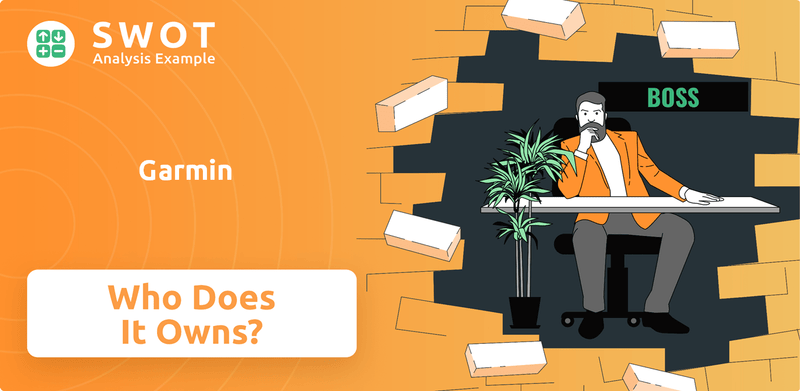
Founded by Gary Burrell and Min Kao, the Garmin company profile has evolved significantly since its inception in 1989. This exploration of Garmin ownership reveals the influence of its founders, the impact of its initial public offering, and the roles of key stakeholders. We'll examine the Garmin parent company and how its structure has adapted to global market dynamics, including where Garmin headquarters are located and the company's overall financial performance.
Who Founded Garmin?
The story of Garmin began in October 1989, when electrical engineers Gary Burrell and Min H. Kao joined forces to create the company. They envisioned a future where GPS technology would be widely accessible, leading them to establish what would become a global leader in navigation and wearable technology. Their initial focus was to integrate GPS into devices for various markets, a vision that set the stage for their early success.
Burrell and Kao, who had previously worked together at King Radio Corporation, brought complementary skills to their new venture. Their combined expertise in electronics and a shared ambition to 'popularize GPS and change the world' fueled the company's early growth. This collaborative spirit and innovative approach were key factors in the company's rapid expansion and market penetration.
The company's first product, the GPS 100, was introduced in 1990, marking an important milestone. The early success of the GPS 100, with 5,000 orders at its debut, indicated strong market interest and validated the founders' vision. The U.S. Army became a customer in 1991, a testament to the quality of the products. By 1995, the company's sales had reached $102 million, with profits of $23 million, demonstrating the company's impressive growth.
Gary Burrell and Min H. Kao co-founded the company in October 1989.
The GPS 100, a GPS unit for boaters, was the first product.
Sales reached $102 million by 1995.
The company went public in December 2000.
Burrell and Kao held approximately 45% of the stock at the time of the IPO.
The U.S. Army became a customer in 1991.
While the exact initial equity distribution among the founders is not publicly available, it is known that by the time of the company's initial public offering (IPO) in December 2000, Gary Burrell held 19,911,155 shares and Min Kao held 20,352,803 shares. Together, their ownership represented 45% of the company's stock at that time. The early success of the company, as highlighted in the Marketing Strategy of Garmin, can be attributed to the founders' vision and strategic decisions.
Garmin SWOT Analysis
- Complete SWOT Breakdown
- Fully Customizable
- Editable in Excel & Word
- Professional Formatting
- Investor-Ready Format
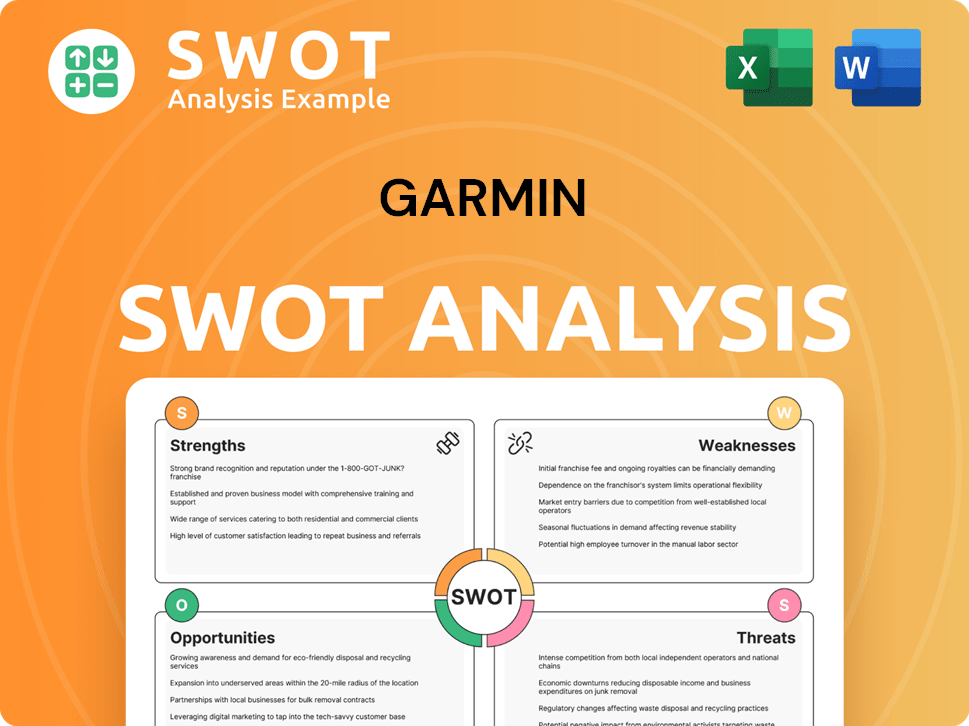
How Has Garmin’s Ownership Changed Over Time?
The evolution of Garmin's ownership structure began with its initial public offering (IPO) on December 8, 2000. The IPO, priced at $14 per share (or $7 post-split), raised approximately $147 million, which was primarily used to fuel the company's growth. A significant event in its corporate journey was the transfer of its listing from NASDAQ to the New York Stock Exchange (NYSE) in December 2021, under the ticker symbol GRMN.
The ownership structure of Garmin has evolved, with institutional investors becoming the dominant force. The company's ownership is primarily held by institutional investors, with a substantial portion held by the general public and a significant individual shareholder. Understanding the ownership structure is crucial for assessing how the company's strategy and governance might be influenced.
| Key Event | Date | Impact on Ownership |
|---|---|---|
| Initial Public Offering (IPO) | December 8, 2000 | Transitioned from private to public ownership, raising capital for expansion. |
| Listing Transfer to NYSE | December 2021 | Signaled a shift in the company's public profile and potentially attracted a different investor base. |
| Ongoing Institutional Investment | Throughout the years | Increased institutional ownership, influencing strategic direction and governance. |
As of March 23, 2025, the ownership of Garmin is heavily influenced by institutional investors, who hold approximately 57% of the shares, totaling 125,913,480 shares. Key institutional shareholders include Vanguard Group Inc., BlackRock, Inc., State Street Corp., and Artisan Partners Limited Partnership. Min-Hwan Kao, a co-founder, remains a significant individual shareholder, holding 9.5% of the shares outstanding. The general public holds a notable 28%. The influence of these major stakeholders is critical, especially considering that the top 17 shareholders control 51% of the ownership. This distribution of ownership highlights the importance of understanding the dynamics of institutional and individual investor influence on the company's operations and strategic decisions. To learn more about the company's customer base, check out the Target Market of Garmin.
Garmin's ownership structure is primarily dominated by institutional investors, with a significant portion held by the general public and a key individual shareholder.
- Institutional investors hold a majority stake, influencing strategic decisions.
- Min-Hwan Kao, a co-founder, maintains a significant individual ownership.
- The IPO in 2000 and the NYSE listing in 2021 were key events in the ownership evolution.
- Understanding the ownership structure is crucial for assessing the company's future.
Garmin PESTLE Analysis
- Covers All 6 PESTLE Categories
- No Research Needed – Save Hours of Work
- Built by Experts, Trusted by Consultants
- Instant Download, Ready to Use
- 100% Editable, Fully Customizable
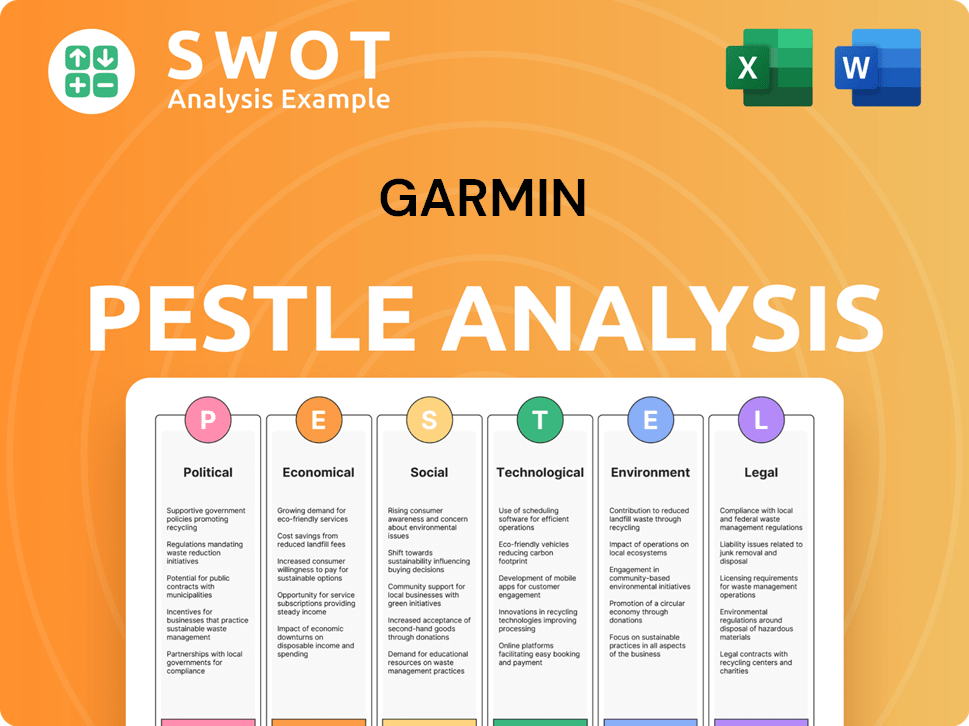
Who Sits on Garmin’s Board?
The current board of directors significantly influences the governance of the company. Min H. Kao, a co-founder, holds the position of Executive Chairman of the board. In June 2025, shareholders re-elected six directors, along with Min H. Kao, ensuring their terms continue until the 2026 annual general meeting. This structure reflects the company's commitment to stable leadership and shareholder representation. Understanding the Garmin ownership structure is key to grasping the company's operational dynamics.
The board's composition includes representation from major shareholders and independent members, ensuring a balance of perspectives. This structure is designed to oversee the company's strategic direction and ensure accountability. The board's decisions impact areas from financial performance to product development, making their roles critical to the company's success. For more insights on the company's strategic direction, see this article on Growth Strategy of Garmin.
| Board Member | Role | Term Expires |
|---|---|---|
| Min H. Kao | Executive Chairman | 2026 |
| (Information on other directors is not available in the provided context) | Director | 2026 |
| (Information on other directors is not available in the provided context) | Director | 2026 |
The voting structure at the company generally follows a one-share-one-vote system. Shareholders registered in the company's share register on the record date are entitled to exercise their voting rights. Shareholders can authorize proxies to a third party or an independent voting rights representative. As of April 11, 2025, there were 191,415,593 shares outstanding and eligible for voting. The company's articles of association allow shareholders to grant proxies to a third party, who does not necessarily need to be a shareholder. There's no public information indicating dual-class shares, special voting rights, or golden shares that would give specific individuals or entities outsized control beyond their direct shareholding.
The board of directors is crucial for the company's governance. The voting structure is straightforward, with one share generally equating to one vote. This information is essential for anyone researching Garmin ownership and the Garmin parent company.
- Min H. Kao serves as Executive Chairman.
- Shareholders can use proxies for voting.
- The company operates under a one-share-one-vote system.
- No significant proxy battles were reported in 2024-2025.
Garmin Business Model Canvas
- Complete 9-Block Business Model Canvas
- Effortlessly Communicate Your Business Strategy
- Investor-Ready BMC Format
- 100% Editable and Customizable
- Clear and Structured Layout
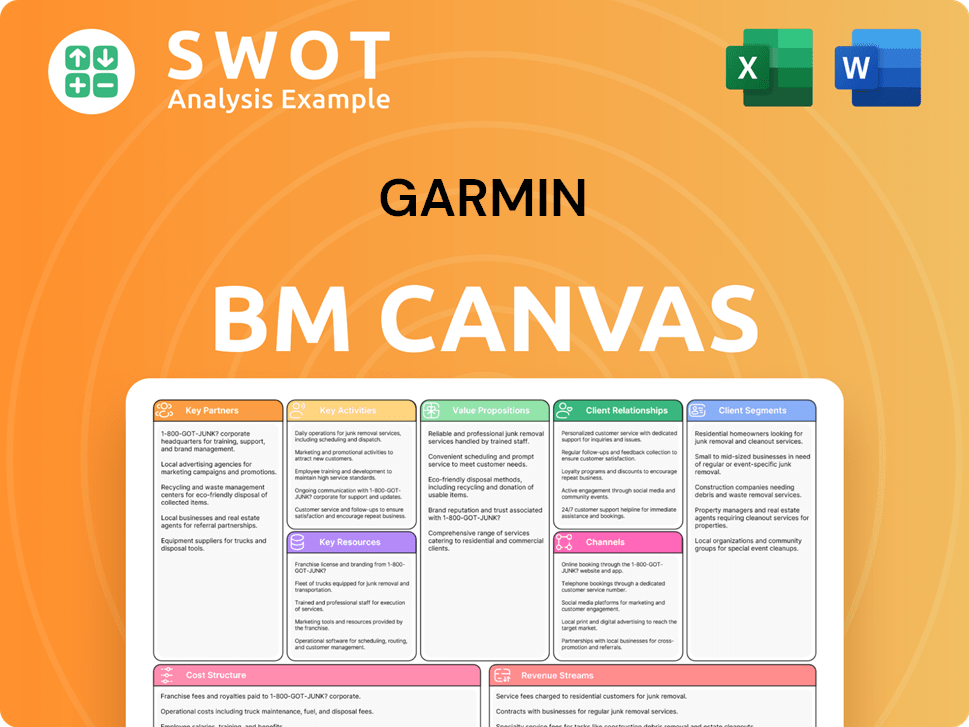
What Recent Changes Have Shaped Garmin’s Ownership Landscape?
Over the past few years, Garmin has focused on returning value to its shareholders through dividends and share repurchases. For fiscal year 2024, the Board of Directors proposed an annual dividend of $3.60 per share, reflecting a 20% increase from the previous year. This dividend is scheduled to be paid in four equal installments, with the first payment of $0.90 expected on June 27, 2025.
In addition to dividends, Garmin has been actively buying back its shares. On February 16, 2024, the Board authorized a share repurchase program of up to $300 million, set to run through December 26, 2026. During the fourth quarter of 2024, the company repurchased $33 million of its shares, leaving approximately $238 million remaining in the authorized program as of December 28, 2024. In the third quarter of 2024, $20 million of shares were repurchased, with approximately $270 million remaining as of September 28, 2024.
Industry trends suggest increased institutional ownership in companies like Garmin. This is evident in Garmin's ownership structure, where institutions hold a significant majority. While founder Min H. Kao remains a substantial shareholder, there has been a natural dilution of founder ownership over time due to the company's growth and public listing. Over the past 3-5 years, there have been no significant leadership changes or founder departures that would substantially alter the ownership landscape. Min H. Kao continues to serve as Executive Chairman, and Cliff Pemble remains President and CEO. The company has not made public statements about any potential privatization or major future ownership changes beyond its ongoing share repurchase program.
Garmin's Board of Directors approved a $3.60 per share annual dividend for 2024, a 20% increase. The company is actively repurchasing shares, with $33 million repurchased in Q4 2024. Institutional ownership is significant, indicating a shift in the ownership profile.
Min H. Kao remains a key shareholder, reflecting the company's founder. There have been no major leadership changes recently. The company has a significant institutional ownership.
Garmin Porter's Five Forces Analysis
- Covers All 5 Competitive Forces in Detail
- Structured for Consultants, Students, and Founders
- 100% Editable in Microsoft Word & Excel
- Instant Digital Download – Use Immediately
- Compatible with Mac & PC – Fully Unlocked
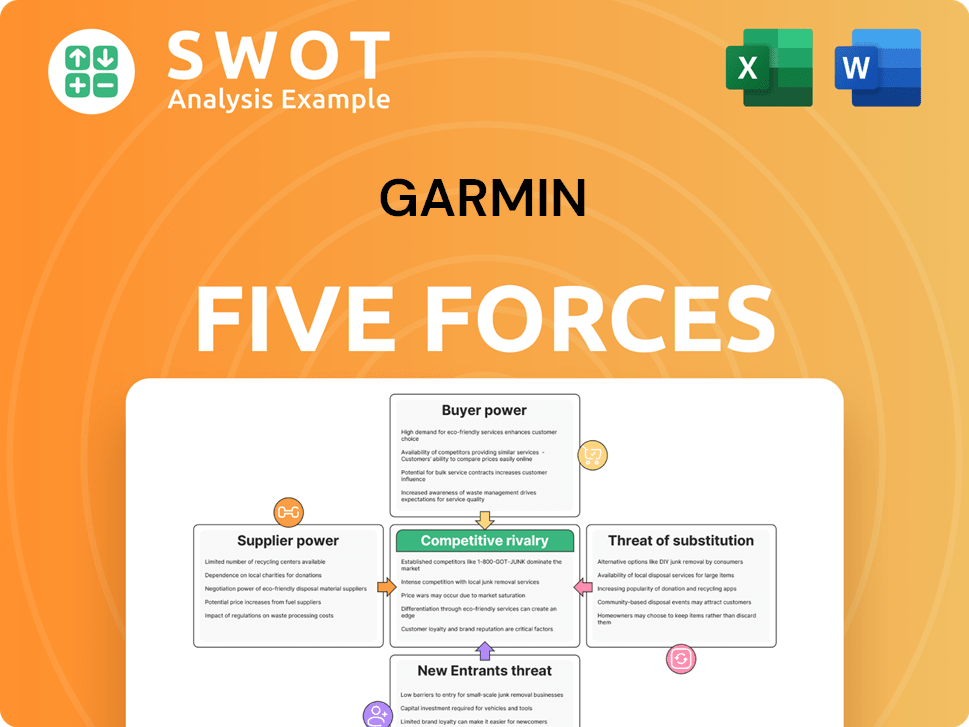
Related Blogs
- What are Mission Vision & Core Values of Garmin Company?
- What is Competitive Landscape of Garmin Company?
- What is Growth Strategy and Future Prospects of Garmin Company?
- How Does Garmin Company Work?
- What is Sales and Marketing Strategy of Garmin Company?
- What is Brief History of Garmin Company?
- What is Customer Demographics and Target Market of Garmin Company?
Disclaimer
All information, articles, and product details provided on this website are for general informational and educational purposes only. We do not claim any ownership over, nor do we intend to infringe upon, any trademarks, copyrights, logos, brand names, or other intellectual property mentioned or depicted on this site. Such intellectual property remains the property of its respective owners, and any references here are made solely for identification or informational purposes, without implying any affiliation, endorsement, or partnership.
We make no representations or warranties, express or implied, regarding the accuracy, completeness, or suitability of any content or products presented. Nothing on this website should be construed as legal, tax, investment, financial, medical, or other professional advice. In addition, no part of this site—including articles or product references—constitutes a solicitation, recommendation, endorsement, advertisement, or offer to buy or sell any securities, franchises, or other financial instruments, particularly in jurisdictions where such activity would be unlawful.
All content is of a general nature and may not address the specific circumstances of any individual or entity. It is not a substitute for professional advice or services. Any actions you take based on the information provided here are strictly at your own risk. You accept full responsibility for any decisions or outcomes arising from your use of this website and agree to release us from any liability in connection with your use of, or reliance upon, the content or products found herein.